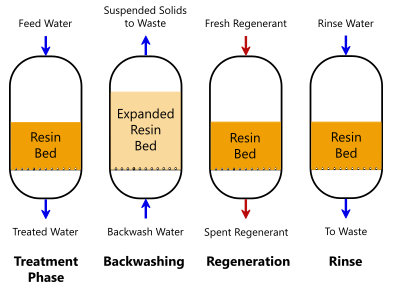Your Guide to PFAS Therapy Technologies and Benefits
The occurrence of PFAS contamination in water resources requires a complete understanding of readily available therapy modern technologies. Each innovation not only targets particular PFAS substances yet also plays an important duty in enhancing total water quality and safeguarding environmental stability.
Recognizing PFAS Contamination
Recognizing PFAS contamination is important for addressing its prevalent effect on ecological and human health (m270 pfas treatment). Per- and polyfluoroalkyl substances (PFAS) are a group of synthetic chemicals widely made use of in different commercial and customer items as a result of their water- and grease-resistant homes. Typically located in firefighting foams, non-stick cookware, and water-repellent textiles, PFAS have actually gotten in the setting via manufacturing procedures, wastewater discharges, and seeping from land fills
As soon as released, these compounds continue the setting, bring about prevalent contamination of dirt and water sources. Their distinct chemical structure, identified by strong carbon-fluorine bonds, makes them resistant to degradation, leading to a sensation called "for life chemicals." PFAS can collect in the human body and the food chain, potentially creating negative health and wellness effects, including immune system disturbance, developing issues, and a raised danger of certain cancers cells.
Regulative agencies and wellness organizations are increasingly identifying the relevance of PFAS contamination, prompting efforts to check, examine, and reduce its results. Comprehending the paths of PFAS contamination is crucial for notifying public law and developing efficient techniques to shield both ecological and human health.
Summary of Treatment Technologies
Different therapy technologies have actually been created to resolve the obstacles posed by PFAS contamination in water and soil. These modern technologies can be broadly categorized right into several classifications, each with its one-of-a-kind mechanisms and efficiency in removing PFAS compounds.
One popular technique is ion exchange, which makes use of resin products to record and get rid of PFAS from polluted water. An additional modern technology, progressed oxidation procedures (AOPs), uses strong oxidants and ultraviolet light to damage down PFAS right into much less damaging substances.

Turned On Carbon Purification
Triggered carbon purification is an extensively made use of technique for the removal of PFAS from infected water, understood for its ability to adsorb a broad variety of organic compounds. This innovation utilizes triggered carbon, a very porous product with a considerable surface, which facilitates the binding of PFAS molecules via physical adsorption. The performance of turned on carbon in removing PFAS is influenced by numerous variables, consisting of the sort of carbon used, the get in touch with time, and the focus of PFAS in the water.
Among the benefits of triggered carbon purification is its versatility; it can be executed in different setups, such as granular activated carbon (GAC) systems or powdered turned on carbon (SPECIAL-INTEREST GROUP) systems. GAC systems are generally employed in larger-scale applications, while political action committee can be utilized in smaller or temporary check this site out arrangements. In addition, the innovation is relatively easy to operate and keep, making it obtainable for several water treatment facilities.

Ion Exchange Solution
Ion exchange systems represent an additional efficient method for the elimination of PFAS from polluted water, enhancing techniques like turned on carbon filtering. These systems operate on the concept of trading ions in the water with ions hung on a resin material. Ion exchange resins can Read Full Report be especially developed to target the negatively billed PFAS compounds, effectively catching them and enabling cleaner water to pass through.
One of the main advantages of ion exchange systems is their capability to eliminate a wide variety of PFAS, including both long-chain and short-chain variants. This versatility makes them ideal for various applications, varying from municipal water treatment to industrial procedures. Furthermore, ion exchange systems can usually achieve reduced detection limitations for PFAS compared to some various other therapy techniques, thus enhancing water high quality.
Nonetheless, it is necessary to keep track of and take care of the regrowth of ion exchange media, as the performance can decrease in time due to saturation. Proper maintenance and replacement of the material are critical for sustaining the system's effectiveness. In general, ion exchange systems provide a reliable and effective option for PFAS elimination, contributing dramatically to risk-free alcohol consumption water standards and environmental management.
Advanced Oxidation Processes
Advanced Oxidation Processes (AOPs) make use of powerful oxidants to effectively break website link down PFAS compounds in infected water. These innovative therapy techniques produce highly responsive species, such as hydroxyl radicals, that can break down complex PFAS molecules into less dangerous results. m270 pfas treatment. AOPs typically use combinations of ultraviolet (UV) light, ozone, hydrogen peroxide, or Fenton's reagent, boosting the oxidation possibility and boosting destruction performance
The key advantage of AOPs lies in their ability to target a broad series of PFAS substances, consisting of both long-chain and short-chain versions. This adaptability is important, as PFAS contamination frequently involves mixtures of various compounds with varying chemical structures. AOPs can be incorporated right into existing water therapy systems, making them a useful solution for several communities and industries.
However, the execution of AOPs can be resource-intensive, needing mindful consideration of functional expenses and power usage. Additionally, while AOPs are reliable in breaking down PFAS, they might not completely remove all by-products, necessitating more treatment steps - m270 pfas treatment. In general, AOPs represent an encouraging opportunity for addressing PFAS contamination, adding to cleaner water resources and boosted public health protection

Verdict
To conclude, attending to PFAS contamination needs a comprehensive understanding of available treatment innovations. Activated carbon filtration, ion exchange systems, and progressed oxidation processes each existing special advantages for effectively getting rid of these unsafe substances from water sources. By picking the proper modern technology, neighborhoods can enhance water quality, secure public health and wellness, and mitigate the ecological dangers connected with PFAS direct exposure. Proceeded research and execution of these techniques are vital for effective monitoring of PFAS contamination in affected areas.